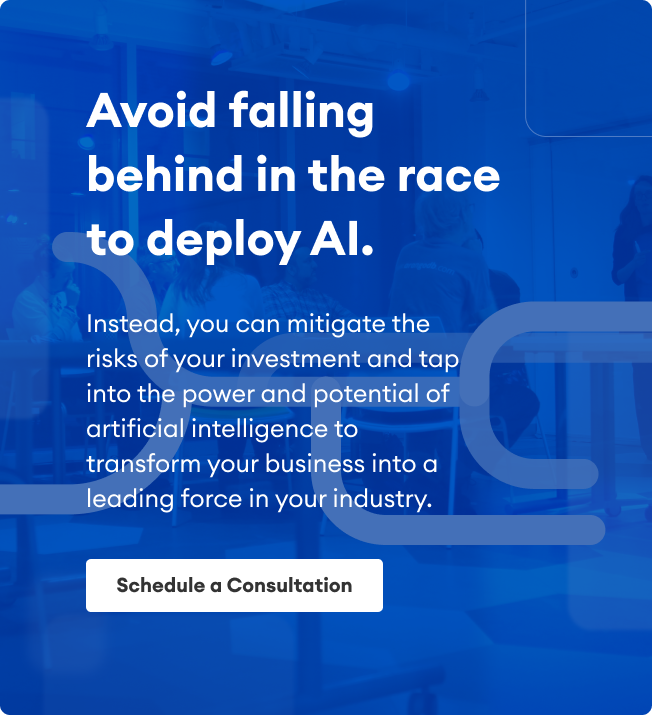Advice from Lisa Stam, a trailblazer in the legal world at the head of a legal office that is entirely online.
In 2017, Lisa Stam, who had previously been working in one of the largest law firms in the country stayed in a hotel for a week and laid the groundwork for her new legal office SpringLaw. The vision: her legal office would function entirely remotely. Remember, this was before remote working became the norm in 2020 following the Covid-19 pandemic. At the time Lisa did this, it was real innovation and there was some risk. Would clients follow here?
As it turned out, it was a worthwhile change as remote working allowed for better budget distribution, prioritizing client service over fancy office spaces. The risk certainly paid off as SpringLaw is now a resounding success with over N clients all over Canada[JS1] .
We were lucky enough to chat with Lisa on March 8, 2022, for an interview on our AI Guides Podcast and she shed some light on the secrets to her success and how you too can use new technologies to improve your business model. Here are some key takeaways from our conversation:
- Why go online?
SpringLaw is designed around the idea of what Lisa calls a digital conveyer belt. All the data that comes in is used efficiently and completely virtually. All client meetings with the exception of legal proceedings are conducted online. Being online limits the cost of infrastructure that is purely for the benefit of the lawyer and not for the client. “Fancy offices in the centre of town are great for the prestige, but for the client this means complicated trips with difficult access and parking and for the lawyers it means a long commute for short face-to-face meetings.” Being online cuts out these costs and inconveniences making legal services more accessible. More accessible financially but also more accessible for people further away as, despite being based in Toronto, SpringLaw welcomes clients from all over Canada.
- The importance of planning to get from idea to reality
In 2017 after having toyed with the idea of an online Legal Firm, it was time for Lisa to take this project from Idea to reality. This meant investing time to lay out a plan and build the structure of the business from the ground up. Lisa spent a week in a hotel room with books and paper doing research and identifying all the needs of her business and building a workflow that addressed all these needs efficiently with all elements flowing into each other smoothly. To build this structure Lisa had a starting point: Clio, a practice management software. The rest of the business structure was built from this starting point with one requirement: all the data must flow smoothly, as Lisa put it, “I wanted a firm where you never had to click something twice”. By planning ahead, with a clear starting point and goal, Lisa ensured all her software fit together and that no resources were wasted on data entry needlessly.
- How is AI included in the structure of SpringLaw and how does it streamline things?
The first application is Alexsei, which is used for Legal research. Lawyers routinely need to conduct legal research on a range of issues. Traditionally, this meant a trip to the library and reviewing cases. With Alexsei,Lisa can pose a question to an AI, and the AI scans millions of documents looking for relevant cases. She receives back a legal memo that sets out the conclusion, the background law, and a list of authorities. We are not at the point where the AI is not so sophisticated that it can do all of this on its own. There is still a need for oversight of the research by a person at Alexsei. Still, for a small team like Lisa’s, the introduction of AI to the research process is an innovative and affordable way to stay on top of her research tasks.
The second application is BlueJ, which is used by Lisa’s team in employment law cases when a person has been let go from their job. Their employer has to pay “reasonable notice” to that employee, but how much is reasonable? Depending on the facts, it might range from one week to several months per year of service. Previously, finding the answer to this question meant a law student would be sent to do research. Now, by speaking with the client over Zoom, and entering in 16 data points to BlueJ, they are able to get a quick answer to that question. The AI is making a forecast of what that person is entitled to, based on a review of similar cases in its database. The means the client can get fast, affordable and quality service.
To conclude, the use of AI makes the research process faster, more efficient and more cost effective. It also improves the client experience by allowing clients to see rapid predicted outcomes based on reproductible methods making thing more transparent.
Some key takeaways for our conversation with Lisa for building a successful business where technology works for you are these 3 tips:
- Take the time and plan, by taking time at the beginning to identify all your business needs, you can build a durable information and digital architecture that will stand the test of time.
- Make sure all your data flows between your software, by limiting clicks you are more efficient, and you ensure a smoother experience with new technologies that are baked into your workflows.
- Think about the future and look forwards, don’t be afraid to include new software and technology. New solutions are constantly emerging to solve common problems.


